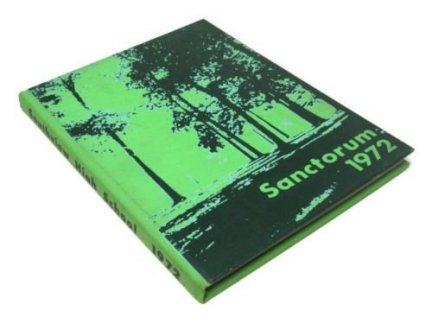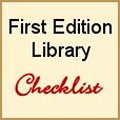|
Critical Mass Booksellingby Craig Stark 22 November 2015 |
In It for the Long Run
Other than buying low and selling high, what, if any, is your strategy for purchasing inventory? One possible approach - and a successful one for at least some booksellers -
is to purchase books (as cheaply as possible) with the best Amazon sales rankings. Not so many years ago I knew several booksellers who did this, maintaining inventories of about
a thousand books, and they did quite well, achieving turn rates of one quarter to one third monthly. When is the last time you sold one third of your inventory in one month?
To be sure, this is short-tail selling on steroids. But wouldn't it be nice to keep your inventory at this level and still make good money? What a time saver it would be! Or would it?
I have no hard facts to back this up, but I suspect that many booksellers approach things with no such single-minded focus. If they can find books at the right price that will sell
quickly, great; the more the merrier. But for many it isn't easy to find enough of them to matter. Unless you have consistent access to a source or sources that produce them in
significant numbers, it's likely that you'll expend far more energy attempting to find them on the front end than you ever will selling them on the back end. Sounds like a recipe
for burnout to me.
But suppose you didn't concern yourself much with turn rates? Suppose instead that your approach was to sell profitable books that you knew would sell sooner or later? I'm not talking
about guessing that they would sell; I'm talking about knowing. And "sooner or later" could mean several years. In some cases, maybe five or more. Many so-called commodity books,
of course, wouldn't meet our criteria because such a high percentage of them gradually - well, sometimes quickly - lose their value over time. No, these books would have to have durable value.
Now, suppose that you were starting a bookselling business today, and you took this long-tail approach - assuming that you knew what to look for. You'd busily go about your
business acquiring inventory, your shelves would fill up with books - and you'd wait for sales. And wait. And wait. Sales would trickle in, but likely not at a rate that would produce
what you were looking for short term. One thing would be almost certain: Your inventory would increase pretty quickly because your sales would be low.
But what if you kept at it in spite of low sales? Remember, these would be books that you would know would sell eventually. You're probably ahead of me here, but as your inventory
increased, so would sales, the trickle would become a flow, and if you kept at it long enough, a sort of critical mass would be reached in which sales would happen often enough to produce
a good income. Perhaps gush. What's more, watching your inventory decline in value would be something that would happen to other booksellers, not you. Culling, re-pricing, etc. might
become forgotten arts.
As it is in the short-tail approach, the key in what I'll call the critical mass approach is selection - choosing books with durable value. This takes knowledge, right? Right. And,
if money is an issue, being careful not to tie up too much cash in what you buy. Perhaps a tall order? Maybe. But maybe not. And one more thing: If you chose books with few or no competing
copies in the marketplace, so much the better. Scarce books could be priced ambitiously because they're scarce, and tools like best-offer options could be used to great advantage.
So - how would you acquire this knowledge? Even though I didn't realize it at the time, one of the more serendipitous things I did when I started selling books was to employ a brainless,
sequential SKU system. The first book I ever listed I assigned a SKU of 000001 to. The second, 000002. And so on. No alphabetization, nor categorization, for me, boy. Though I didn't realize
it at the outset, this system was to become one of my greatest teachers. As my inventory grew - and sales happened - gaps between books also grew, and once a month or so I moved books
forward to close these gaps. Then an interesting thing began to reveal itself. The books that made their way to those first few shelves on my first shelving unit shared something critical
in common: They hadn't sold.
In some cases they were commodity books; they had lost much of their value and hadn't been re-priced. A common phenomenon in bookselling. In most cases, however, they were just ...
odd books. I've always been loath to purchase books that are common anyway, so most of them were uncommon if not scarce. But they were darned odd, too, the sort of books that I wouldn't
purchase for myself, nor could I imagine, once I looked at them with cold, "unsold" objectivity, somebody else buying them - with few exceptions.
At this point I had one of those Aha! moments. It occurred to me to look for what wasn't on those shelves. One class of books came immediately to mind - yearbooks.
I sell a lot of them at prices some would think ambitious if not extortionary, but they are often both scarce and much sought after by the right buyer, if you're willing to wait
for your buyer. Also, often, they can be had for a buck or two, and there seems to be little competition for them at sales. Anyway, not only were there no yearbooks on the first five
shelves facing me, but there were also no yearbooks on the shelves in my second aisle. And there were many, many dozens of them in my inventory at the time - for that matter, there
are at any given time.
Ponder this for a moment. If you could use this approach generally for your business, you'd be sitting pretty, wouldn't you? Are there other classes of books that behave like yearbooks?
If there weren't, I wouldn't be writing this article. I should emphasize that using my SKU system isn't the only means possible of identifying them. Consistent marketplace study will unearth
them as well.
I realize that this approach isn't for everybody. For those just getting started especially, it requires patience, tenacity for working through an inevitable period of low sales at the
outset, and a desire to be in bookselling for the long run. Oh - and space for a larger than average inventory! But it can also be an approach an experienced bookseller takes on at mid-stream
as part of a two-or-more-pronged strategy. Something to think about.
< to previous article
to previous feature article >

Questions or comments?
Contact the editor, Craig Stark
editor@bookthink.com
















